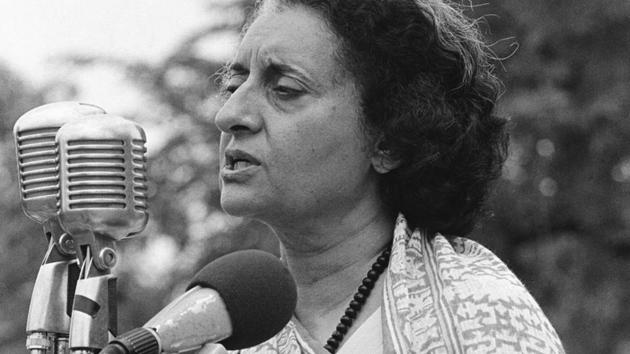CIA files: Despite keeping tabs, US was unaware of Indira Gandhi’s Emergency plans
In the days leading up to the 1975 Emergency, the US Intelligence had little or no information of Prime Minister Indira Gandhi’s intention to rule by decree, according to declassified documents posted on the Central Intelligence Agency’s online database.
In the days leading up to the 1975 Emergency, the US Intelligence had little or no information of Prime Minister Indira Gandhi’s intention to rule by decree, according to declassified documents posted on the Central Intelligence Agency’s online database.

These are among 930,000 documents made accessible on CREST, the CIA’s records archive. The trove contains 12 million pages of dispatches, memoranda and records of briefings documenting the agency’s spycraft dating as far back as the 1940s.
Early intelligence bulletins on South Asia were mostly regurgitated news reports offering very little new insight. Though India’s nuclear programme was closely monitored, day-to-day briefings were mundane and didn’t cover a lot of ground.
Highlights
A trove of 930,000 declassified documents, running into more than 12 million pages, recently posted online by the CIA provides fascinating insights into the way the US spy service covered India.
Hindustan Times did a deep dive into the documents to find out how the CIA tracked important events and personalities in India over a period of more than five decades beginning in the late 1940s.
After Indira Gandhi’s conviction by the Allahabad high court for campaign violations in June 1975, the CIA bulletins are replete with news reports and suggested she would resign from her position.
According to a memorandum dated June 18, 1975, “Mrs. Gandhi would not wish the job to go” even temporarily to her closest allies such as YB Chavan and Jagjivan Ram. It stated she would be “especially reluctant to have Ram take over” because she deemed him too ambitious and unlikely to give her job back.
According to cables released by Wikileaks in 2013, the CIA had gained a source within the prime minister’s household between 1975 and 1977. The CIA dispatches do not corroborate this source, but information after the declaration of Emergency was more specific, suggesting improved intelligence gathering in New Delhi.
By August 8, 1975, the CIA believed that “Gandhi’s greatest asset is her willingness to play politics with few holds barred. She admits she’s not inhibited by her father’s stern sense of propriety. ‘My father,’ she says ‘was a saint who strayed into politics, I am not of the same stuff.’”
This mirrored a 1972 assessment of her political guile, which stated that “she has attempted to single out key individuals, divide them from their fellows, and – when the stage was set – move swiftly to topple them from power.”
As the situation in India escalated during the Emergency, an extensive 23-page dossier on Indira Gandhi’s close aides was filed in October 1975. Most of it has been redacted, but the summation suggests she was becoming more reclusive and kept most of her cabinet at arm’s length.
“Mrs. Gandhi is more powerful today than ever before, but she also remains isolated,” it states. Although she relies on the counsel of her close aides, “she will continue to make all major policy and many minor operation decisions”.
Further Intelligence bulletins are accompanied by detailed annexures about the Prime Minister and the rise of her son, Sanjay Gandhi, who was described as “a political novice” with “a penchant for browbeating”.
As a result, the CIA began to examine the involvement of her son in larger policy decisions. The USSR, in particular, was “unhappy over Sanjay’s growing role” in his mother’s inner circle. But even Sanjay had limits to advancement. “He does not control his mother, she continues to make all the decisions,” the CIA said.
Read More:
US wanted ‘nuclear emissary’ to reduce India-Pakistan tensions, CIA papers reveal
From Subhas Chandra Bose to Sai Baba, how the CIA tracked India
The CIA believed as far back as 1948 that Subhas Chandra Bose was dead
CIA thought Sathya Sai Baba’s movement would become a ‘worldwide religion’
Revealed: How CIA tried to gather intel before 1971 India-Pakistan war





